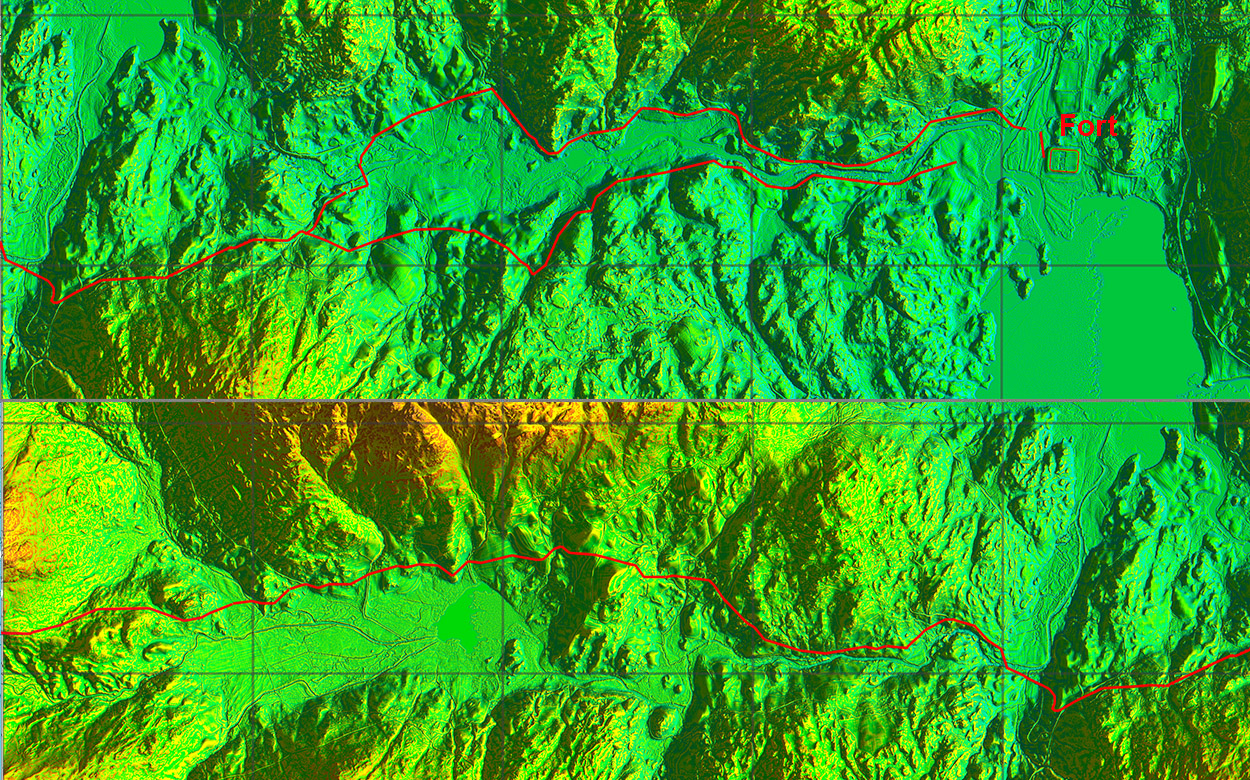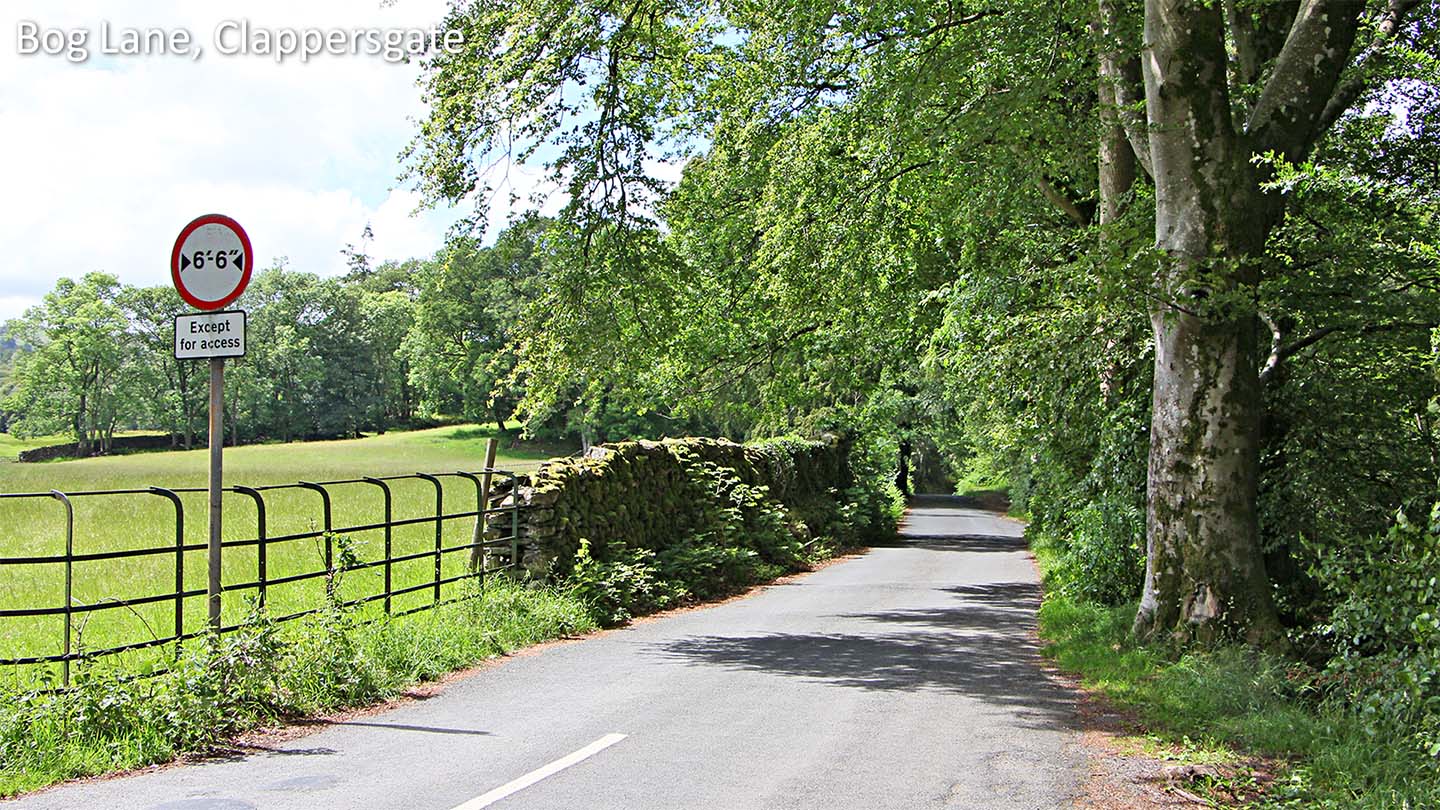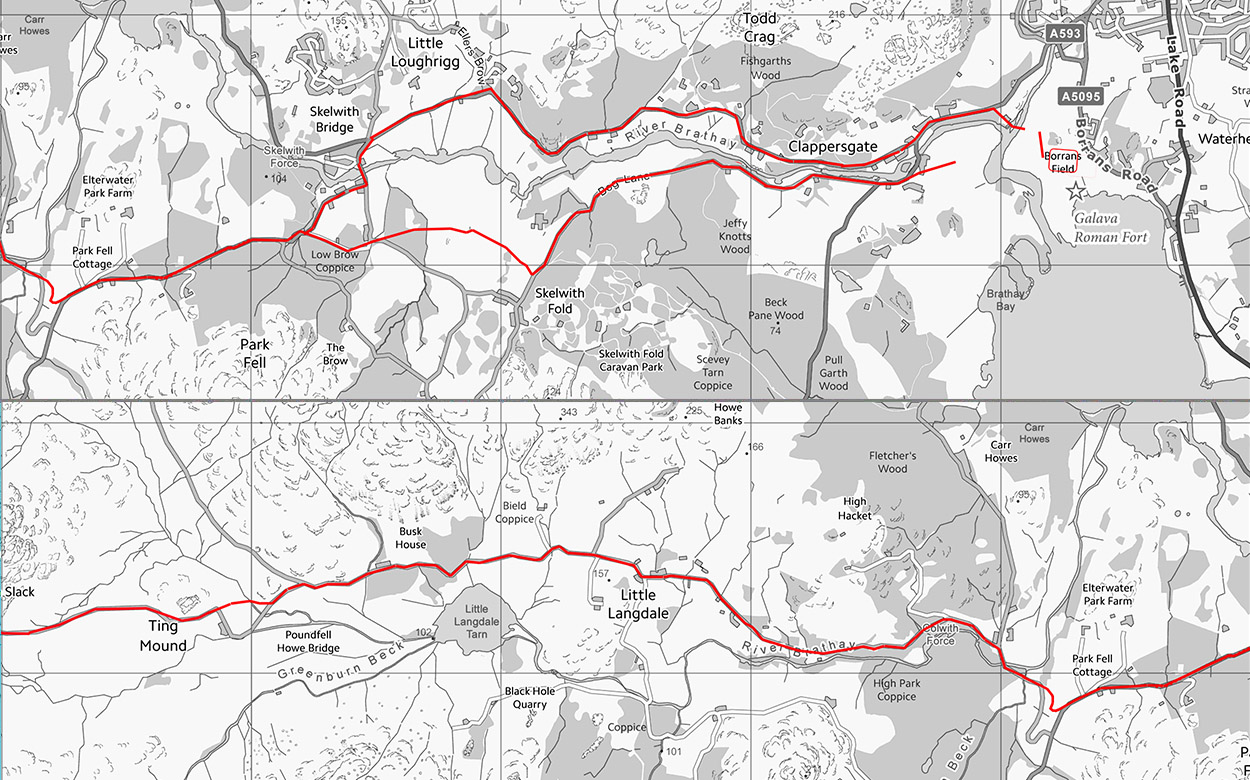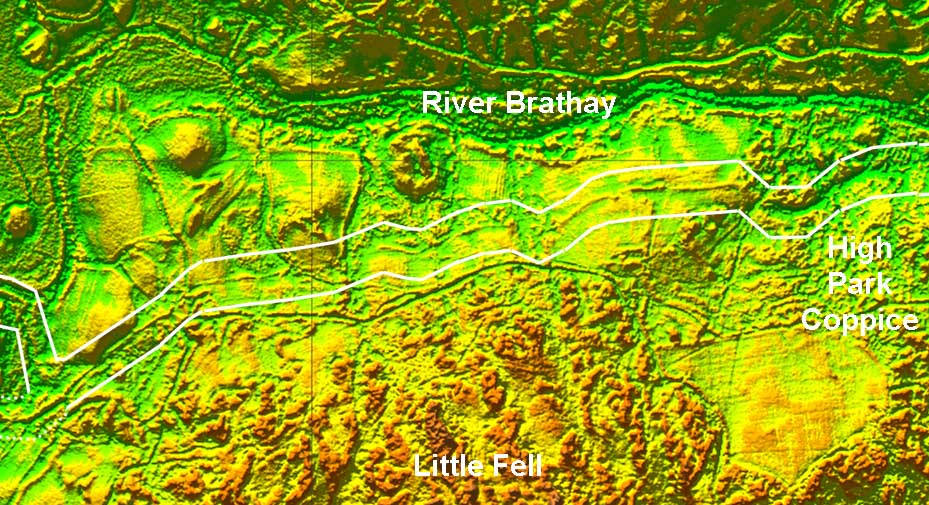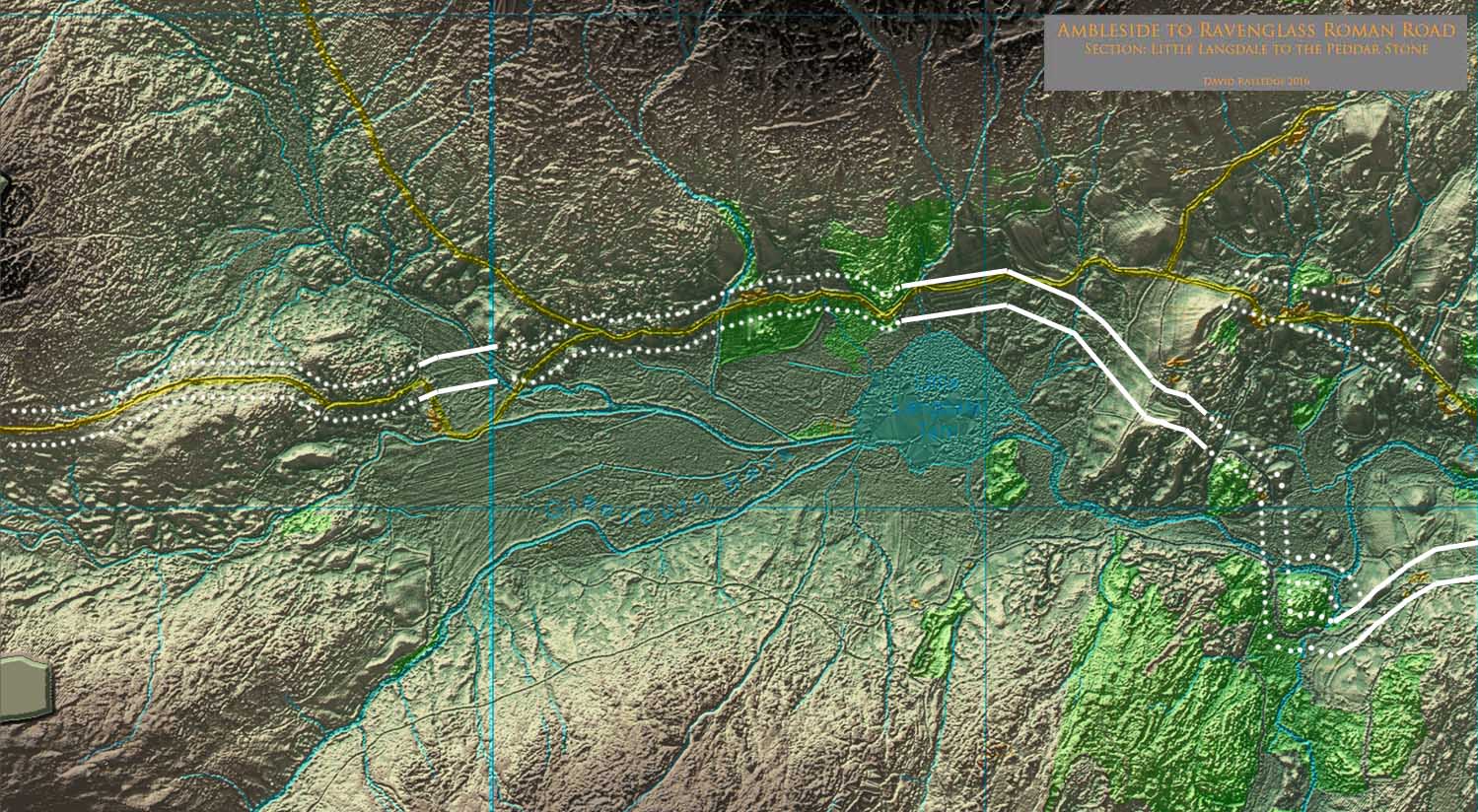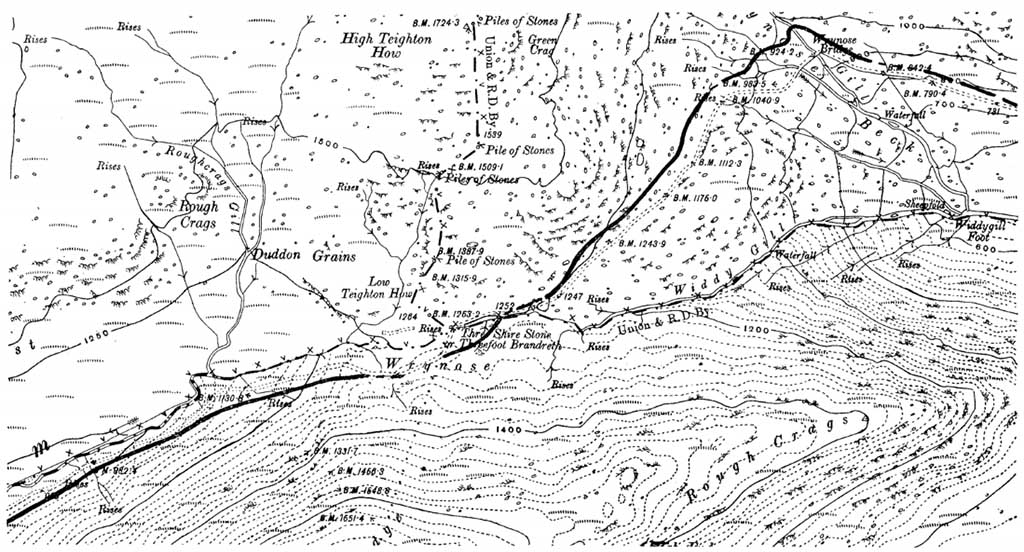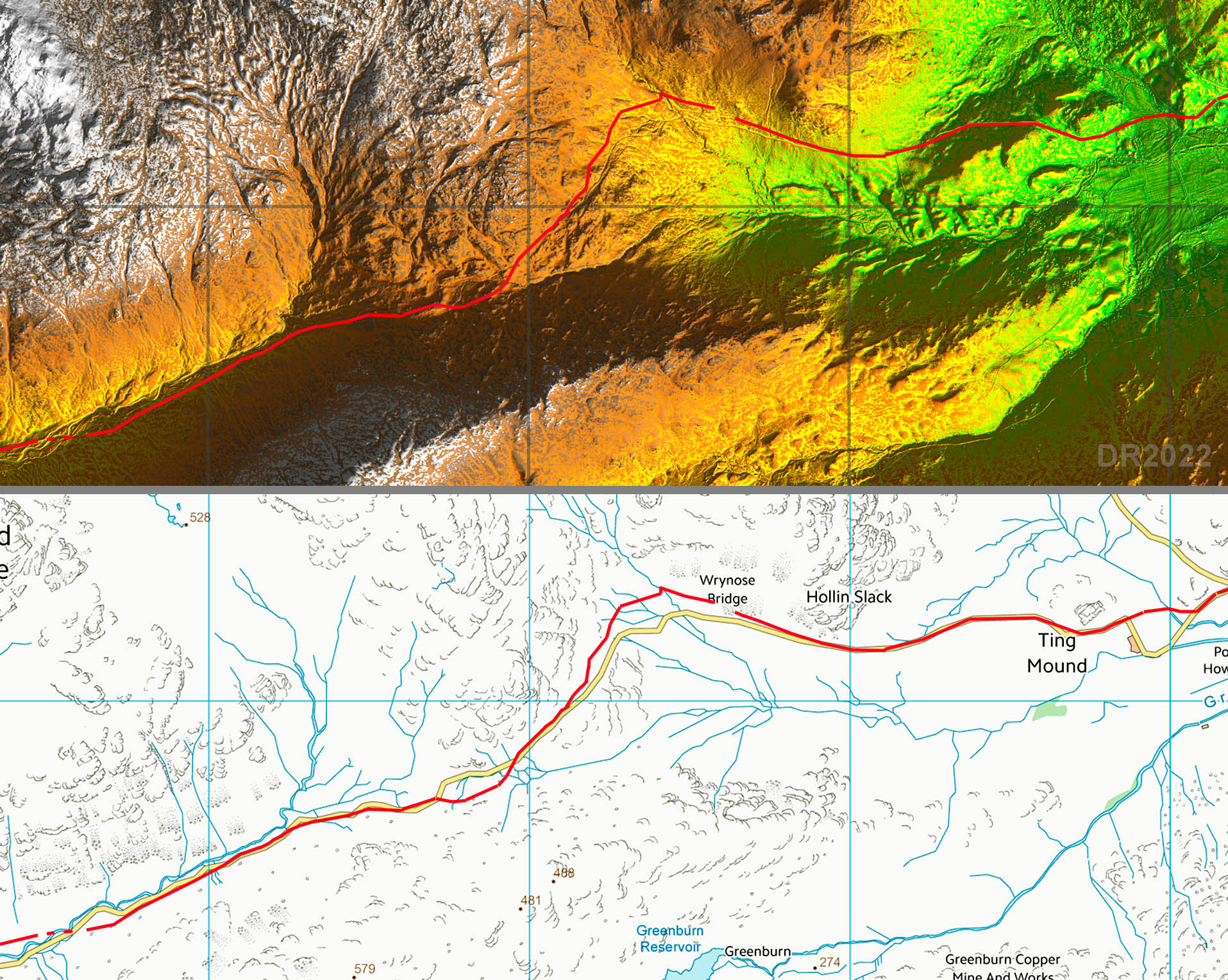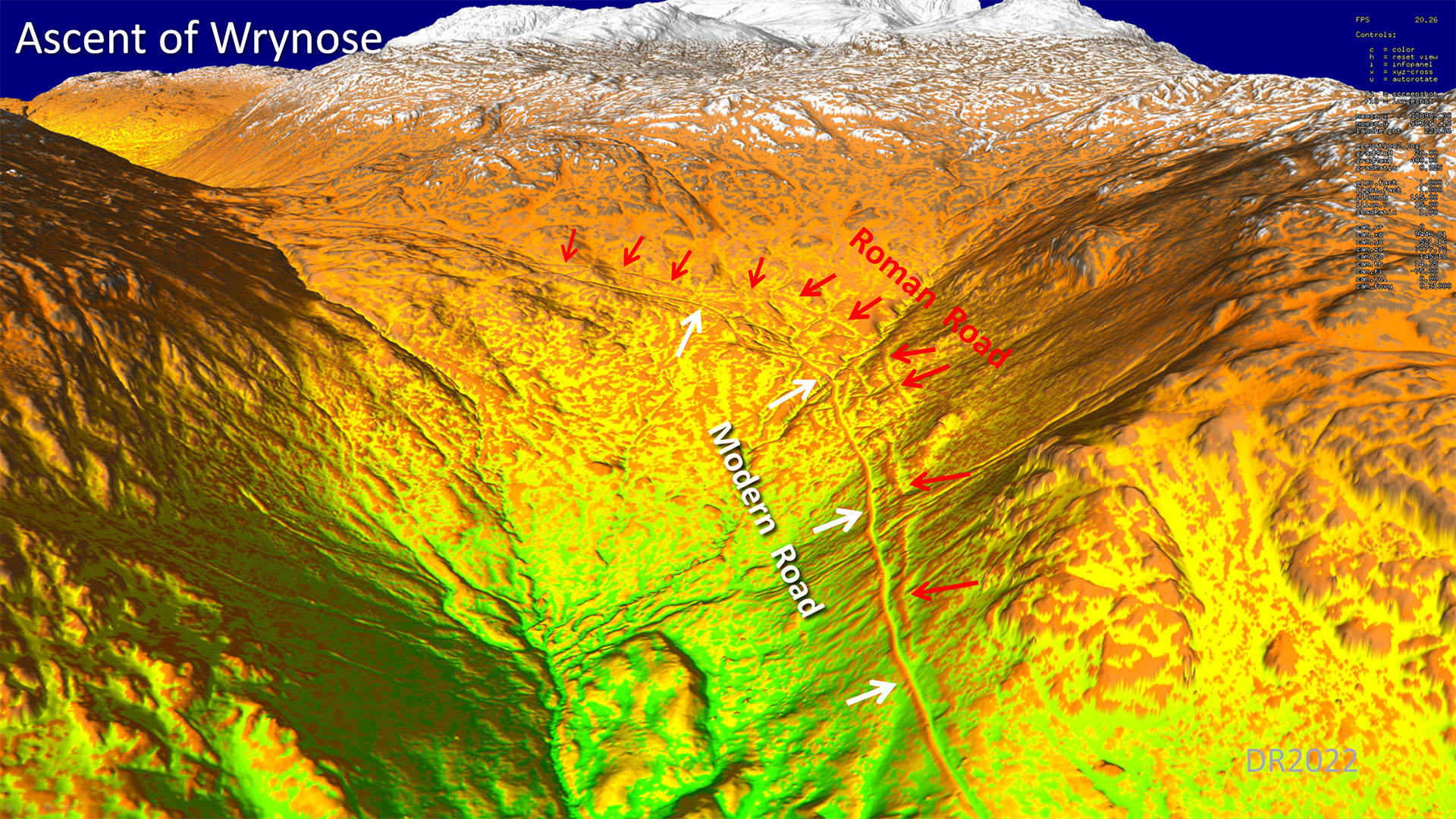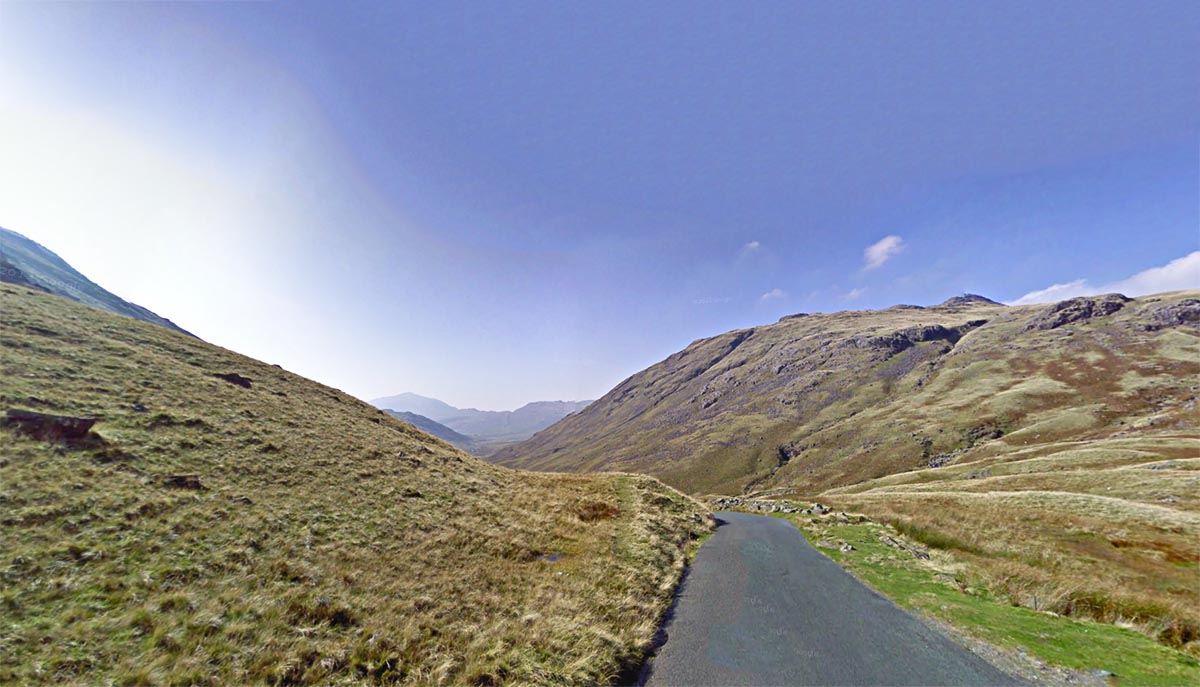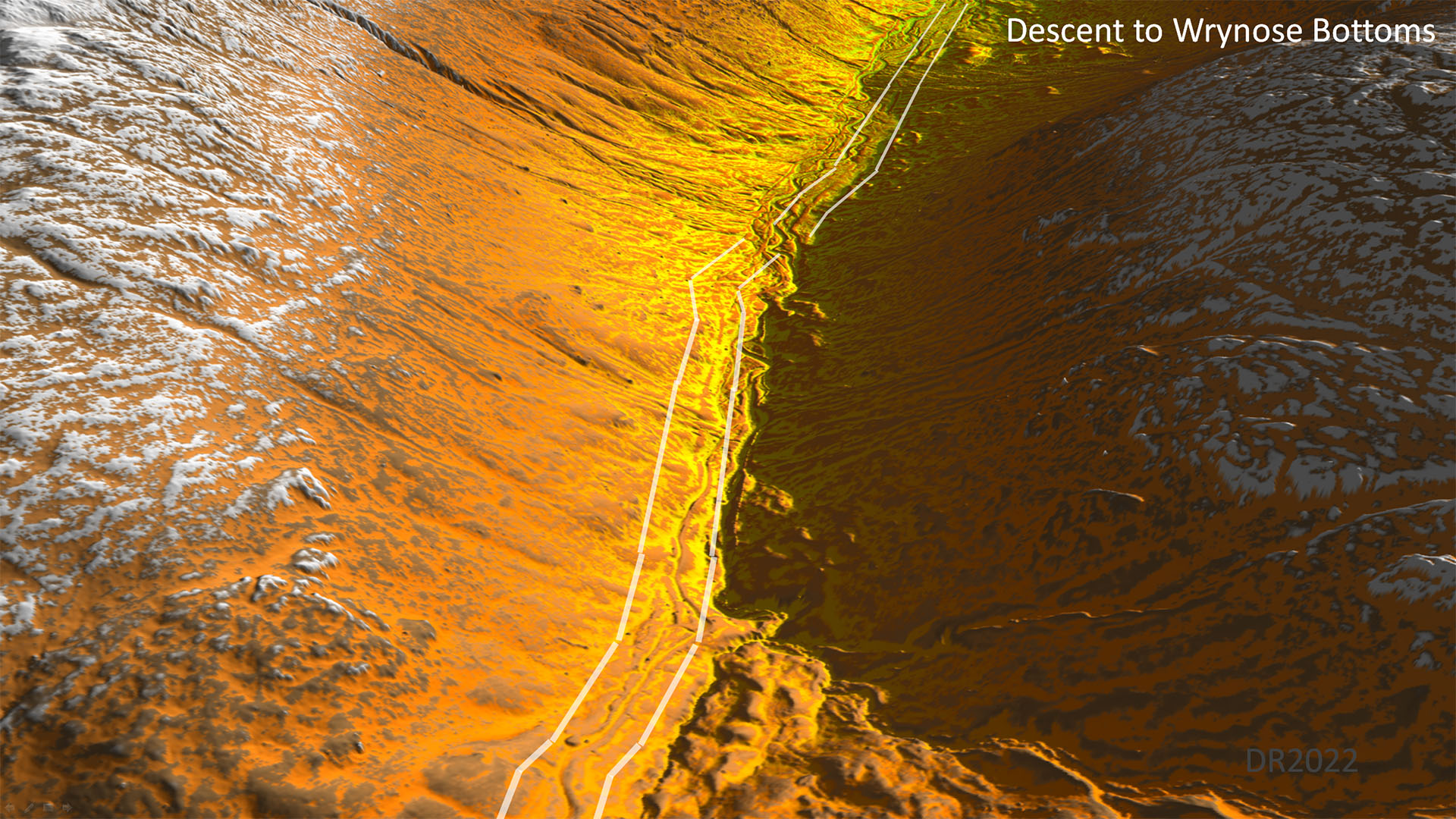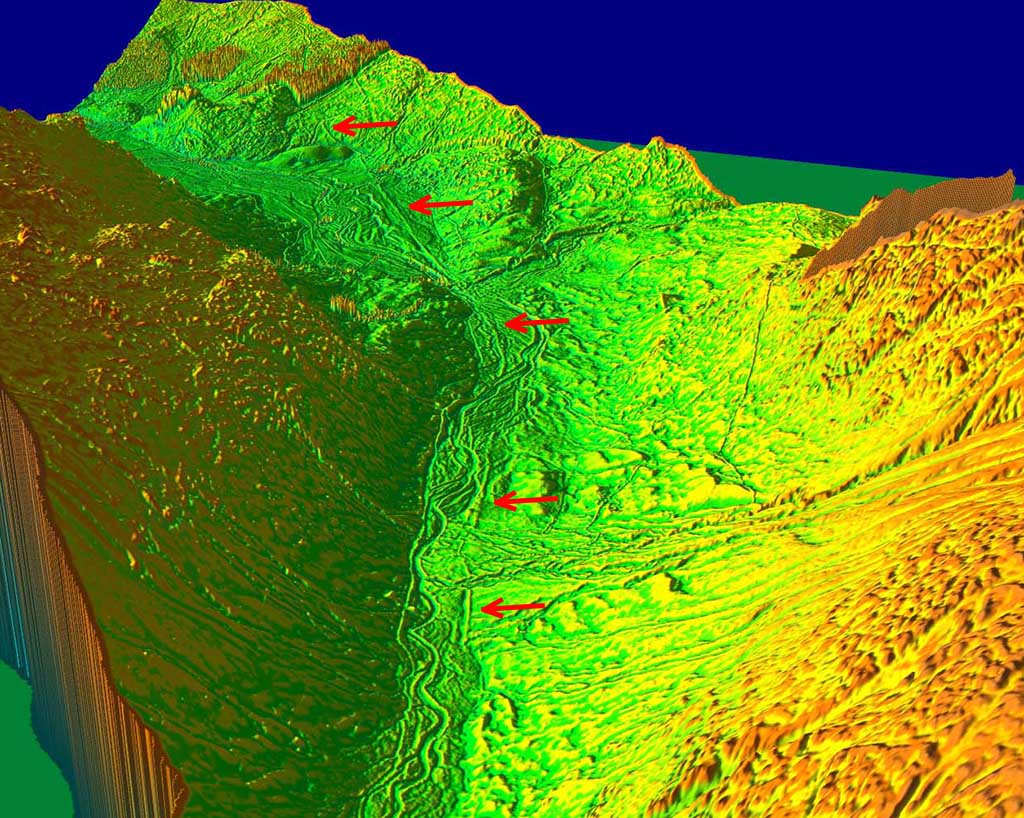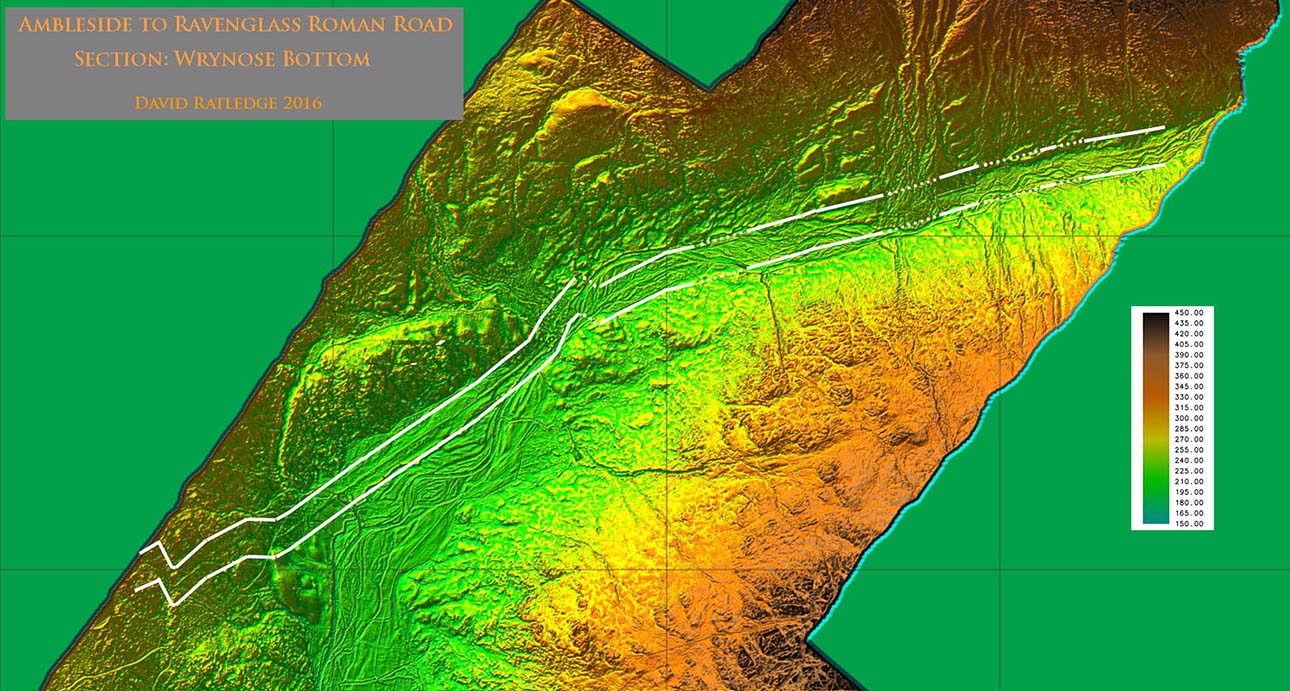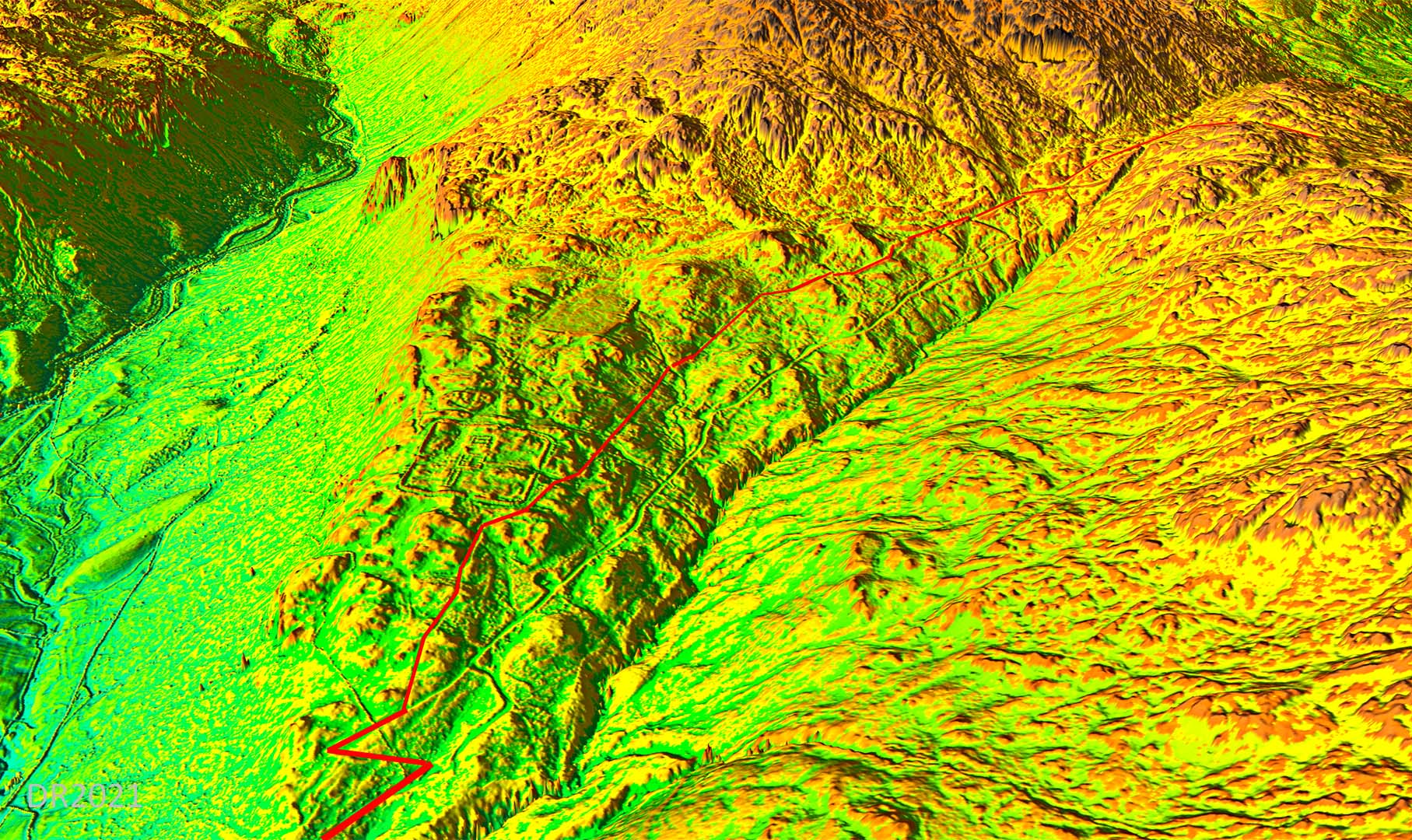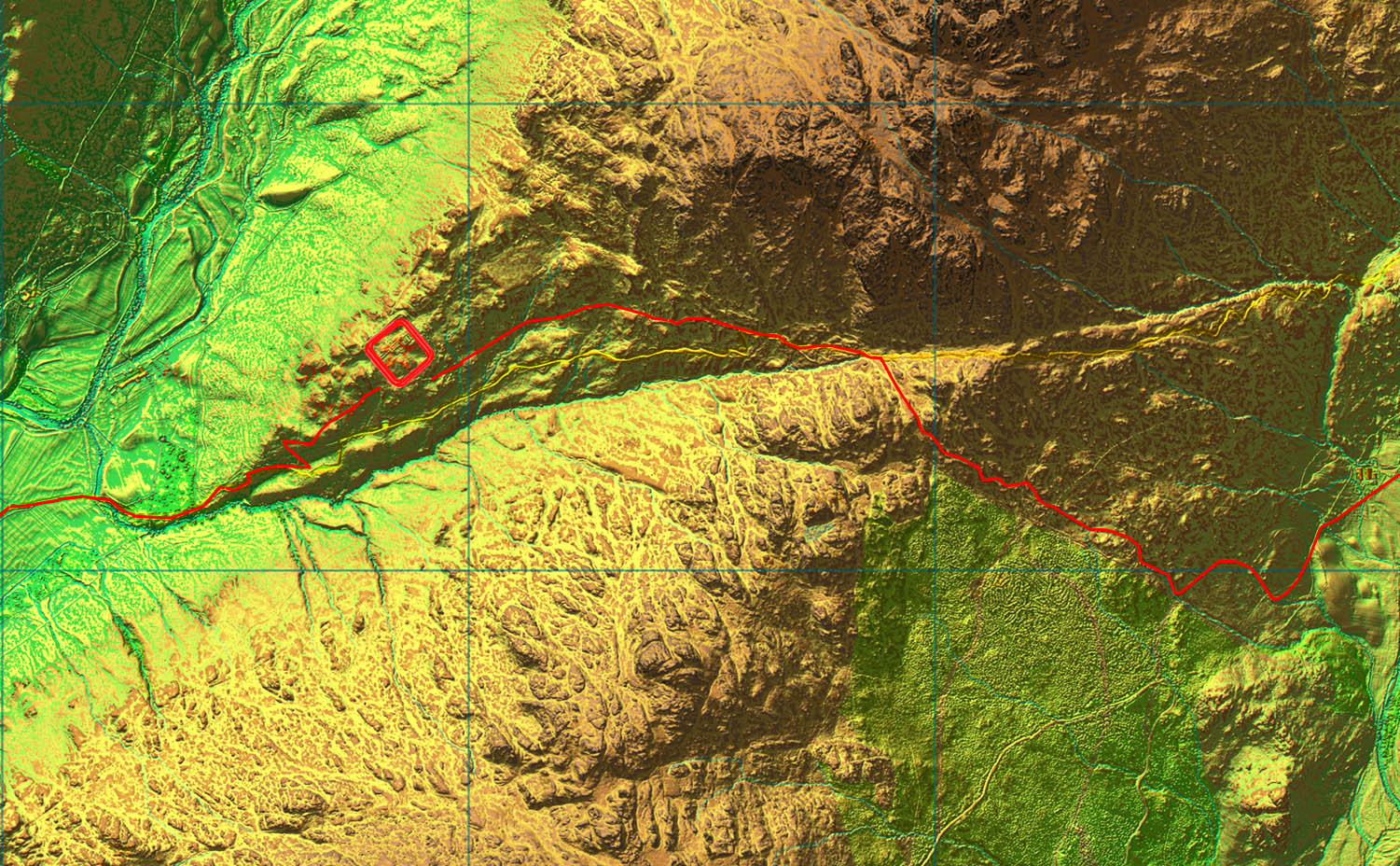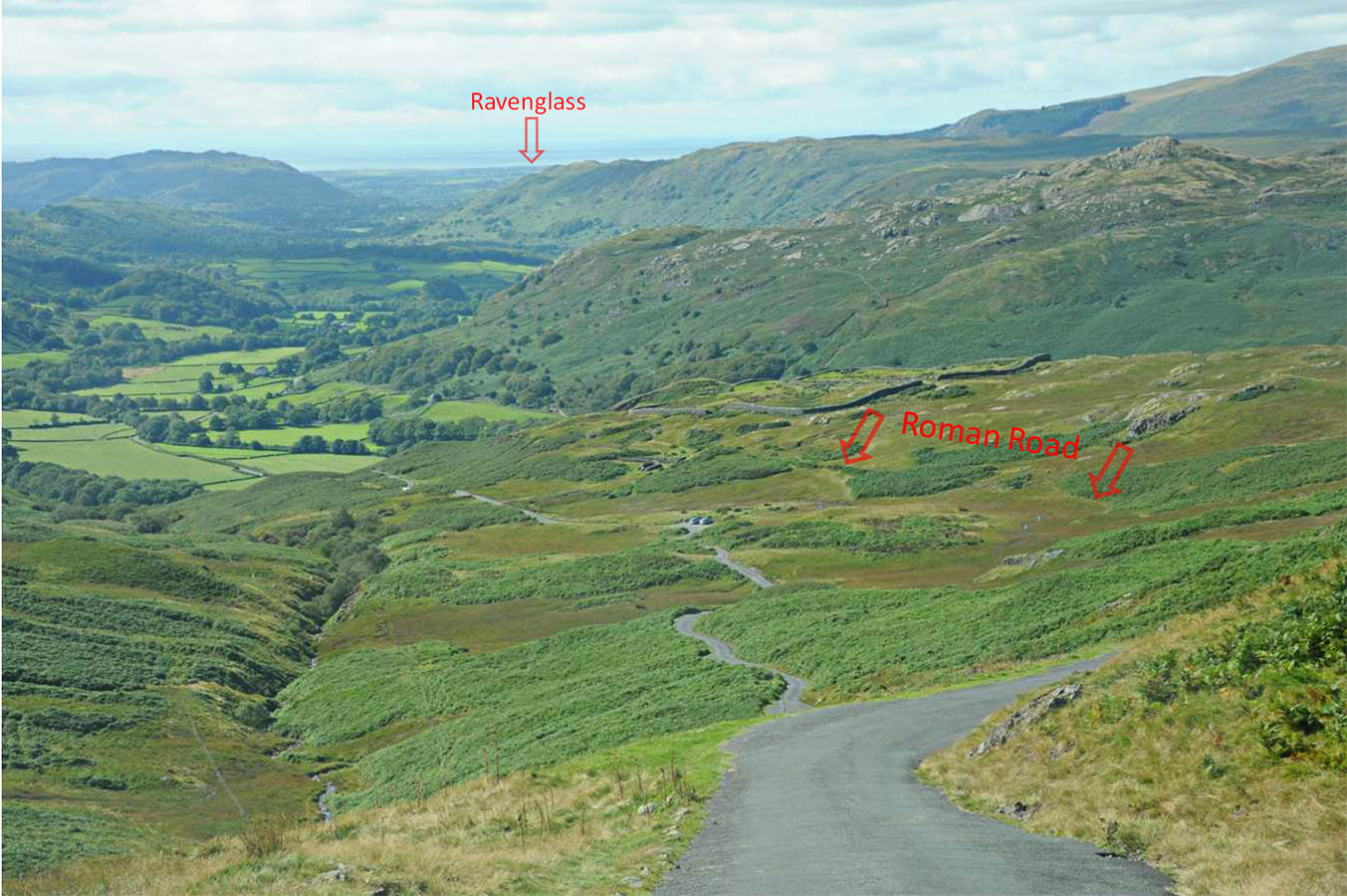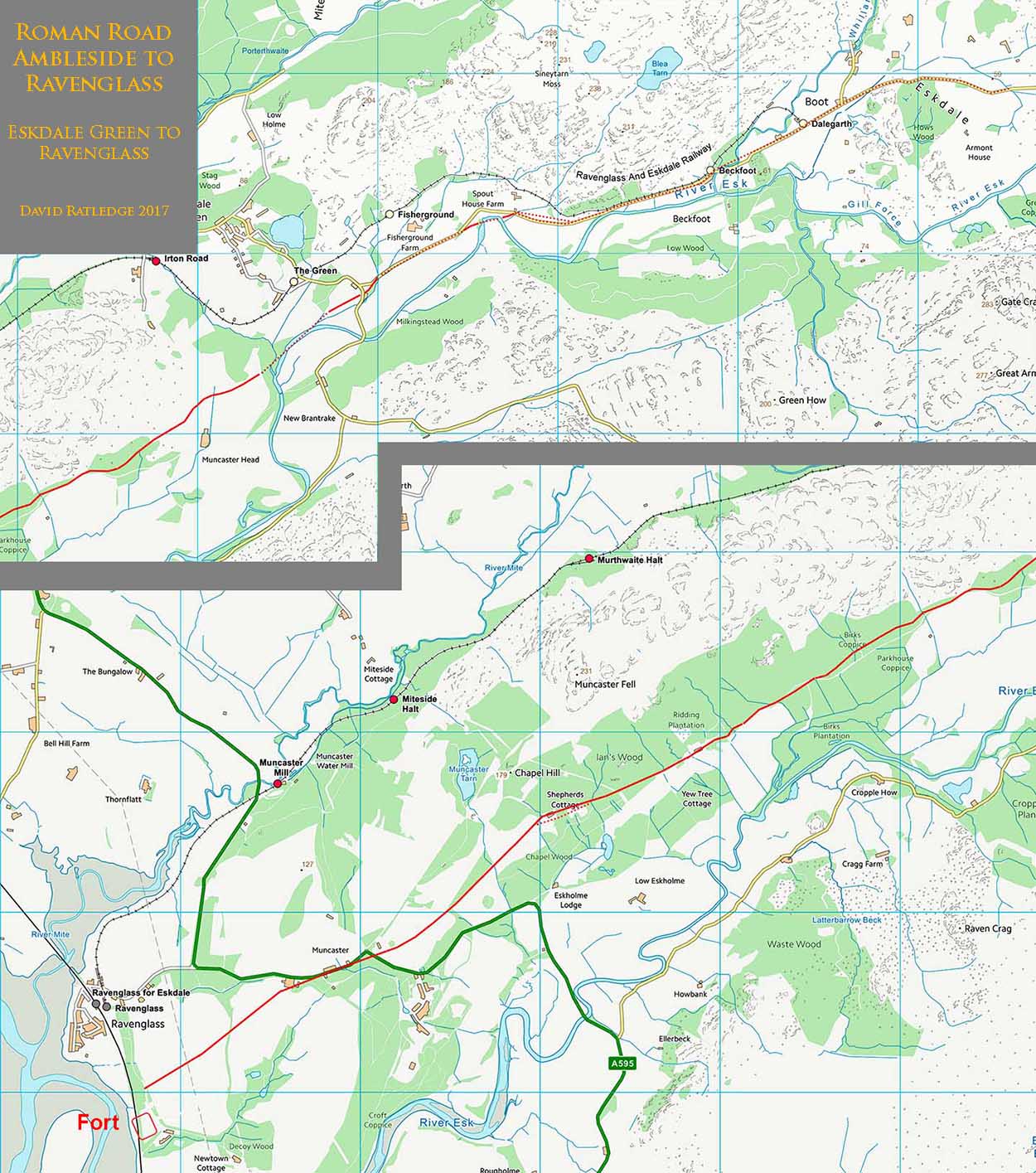 |
The Roman Road from Ambleside to Ravenglass, Margary 740The definitive work on the course of this Roman road was carried out by Professor Ian Richmond over 70 years ago. His findings still stand today but the two extremities of the road, west from Ambleside and east from Ravenglass could only be surmised in his day. Lidar has enabled progress to be made at the Ravenglass end but the eastern end (Ambleside to Wrynose) is still very much "work in progress". This a spectacular road and travelling it today is still an adventure with Wrynose and Harknott passes to be overcome.
|
|
NEW - 3D Lidar video flyover from Wyrnose Bottoms to Hardnott Fort |
Western Route MapThe situation from Eskdale Green to Ravenglass has now become much clearer with the route of the road determined with high confidence.
|
Lidar Image - Woolpack Inn to Eskdale Green From the foot of Hardknott Pass to Eskdale Green the Roman and modern roads coincide. There are one or two deviations such as Spout House Farm/Hillin Head (see next image) but generally there is nothing now visible. The modern and Roman road finally separate at Eskdale Green. It would appear that later movement of the River Esk has destroyed the Roman line and the modern road has had to divert further south. |
Click for larger view |
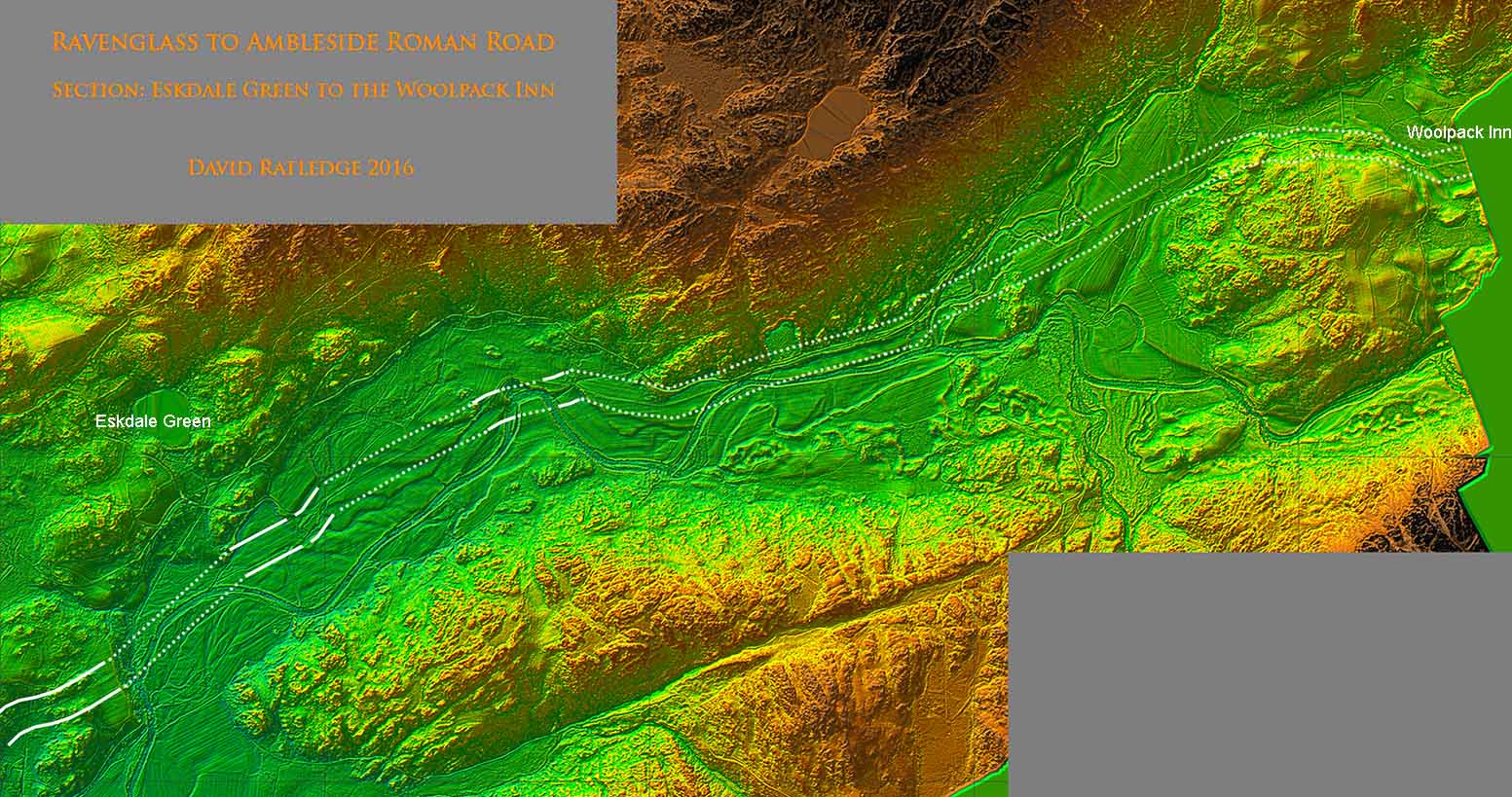 |
Agger - Hollin Head Cottage Hollin Head Cottage is on the modern road near Spout House Farm. Here the modern road and the Roman road diverge for a short section. The Roman agger is pronounced and clear but has been washed away beyond the trees by movements of the river.
|
Click for larger view |
 |
Agger - approaching The Green Again the modern road and the Roman road diverge approaching The Green. The Roman agger is pronounced and is now heading for Forge Hills but the river has destroyed a long section.
|
Click for larger view |
 |
Lidar Image - Forge Hills West of Eskdale Green the agger resumes. It is clear where It crosses Forge Hills (SD1432 9931) and passes north of Muncaster Head.
|
Click for larger view |
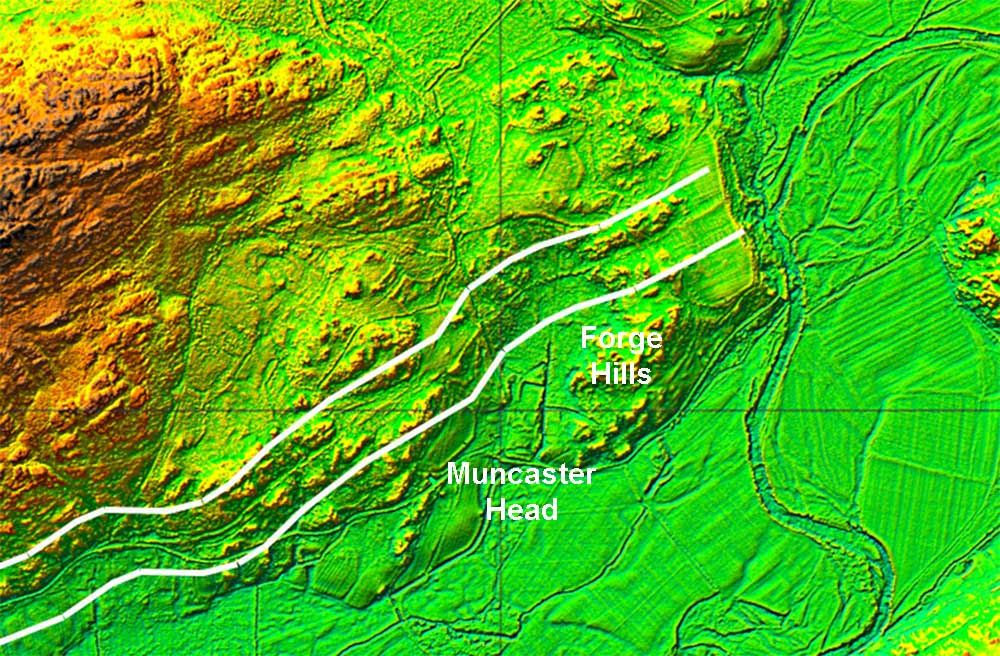 |
Lidar Image - Eskdale Green to Ravenglass Alongside Muncaster Fell, the Roman line mostly coincides with a modern track, but again several deviations occur here and there such as at Birks Coppice. This stretch passes close to the Muncaster Roman kilns. The final run in to Ravenglass is very clear on the Lidar (see next image).
|
Click for larger view |
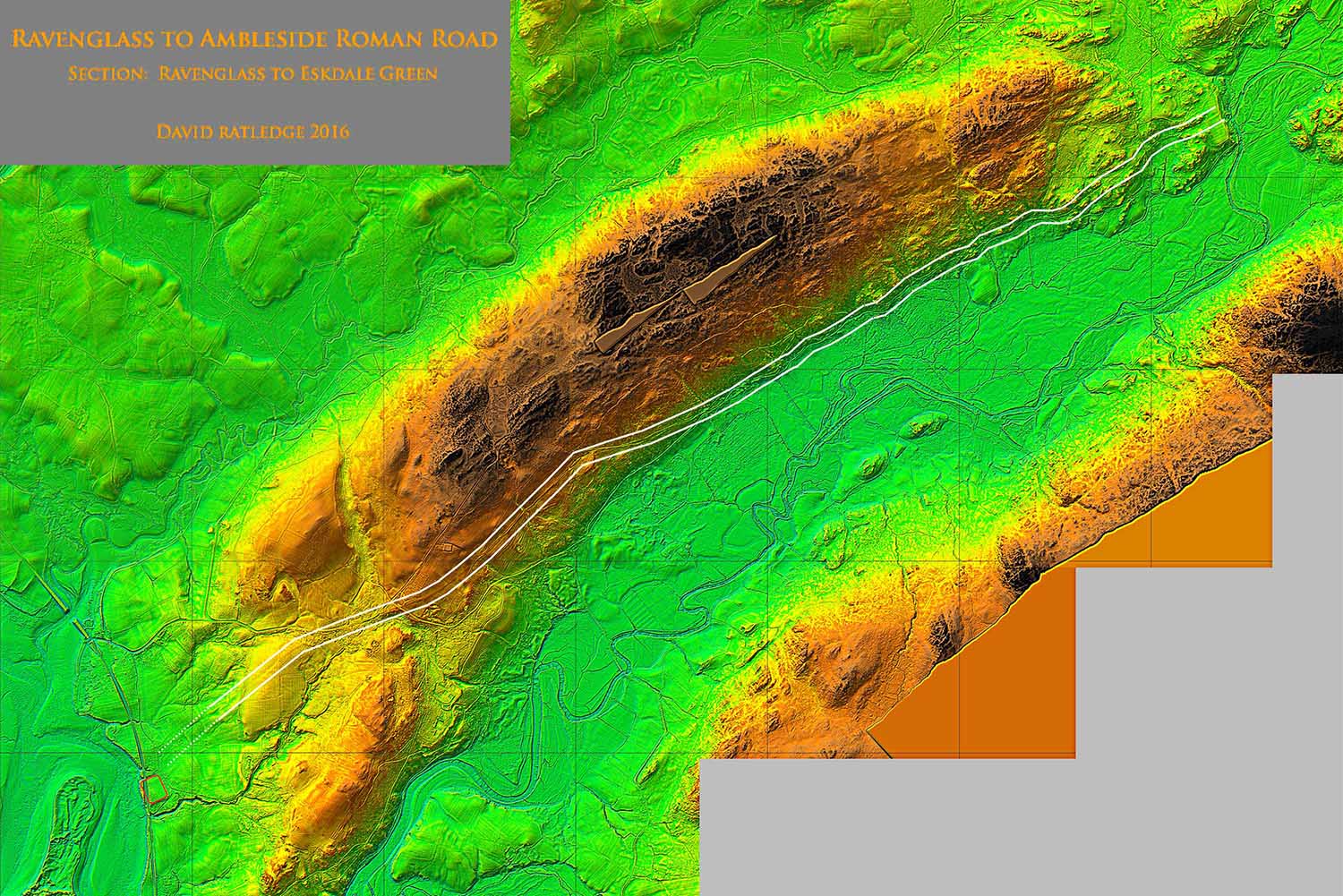 |
Lidar Image - Ravenglass Recently, as part of the Romans in Ravenglass Community Archaeology Project, the road in the vicinity of Ravenglass fort was found. Lidar also shows this clearly and has extended the line into Eskdale. Until the Romans in Ravenglass project, it was generally believed that this road emanated from the fort's east gate. The project found that it actually lay around 150 metres north of the fort. In addition, Lidar indicates that there was possibly another road branching from this one towards the bath-house and fort (dotted). The main route from the fort environs is very clear and again across Muncaster Chase (SD1030 9685). Quite why the alignment of the road is so obviously north of the fort remains a puzzle.
|
Click for larger view |
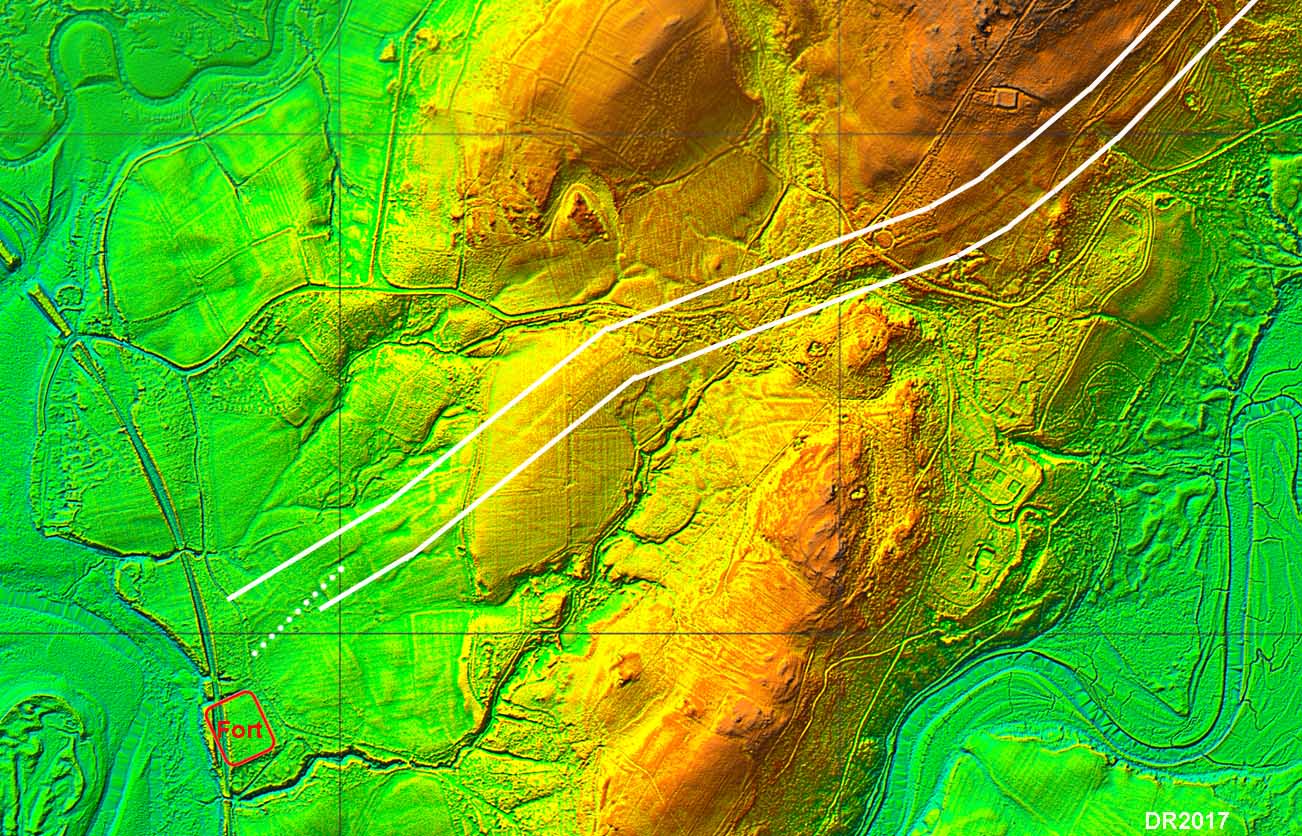 |
3D Lidar Image - Ravenglass Fort setting. View is from the south-west.
|
Click for larger view |
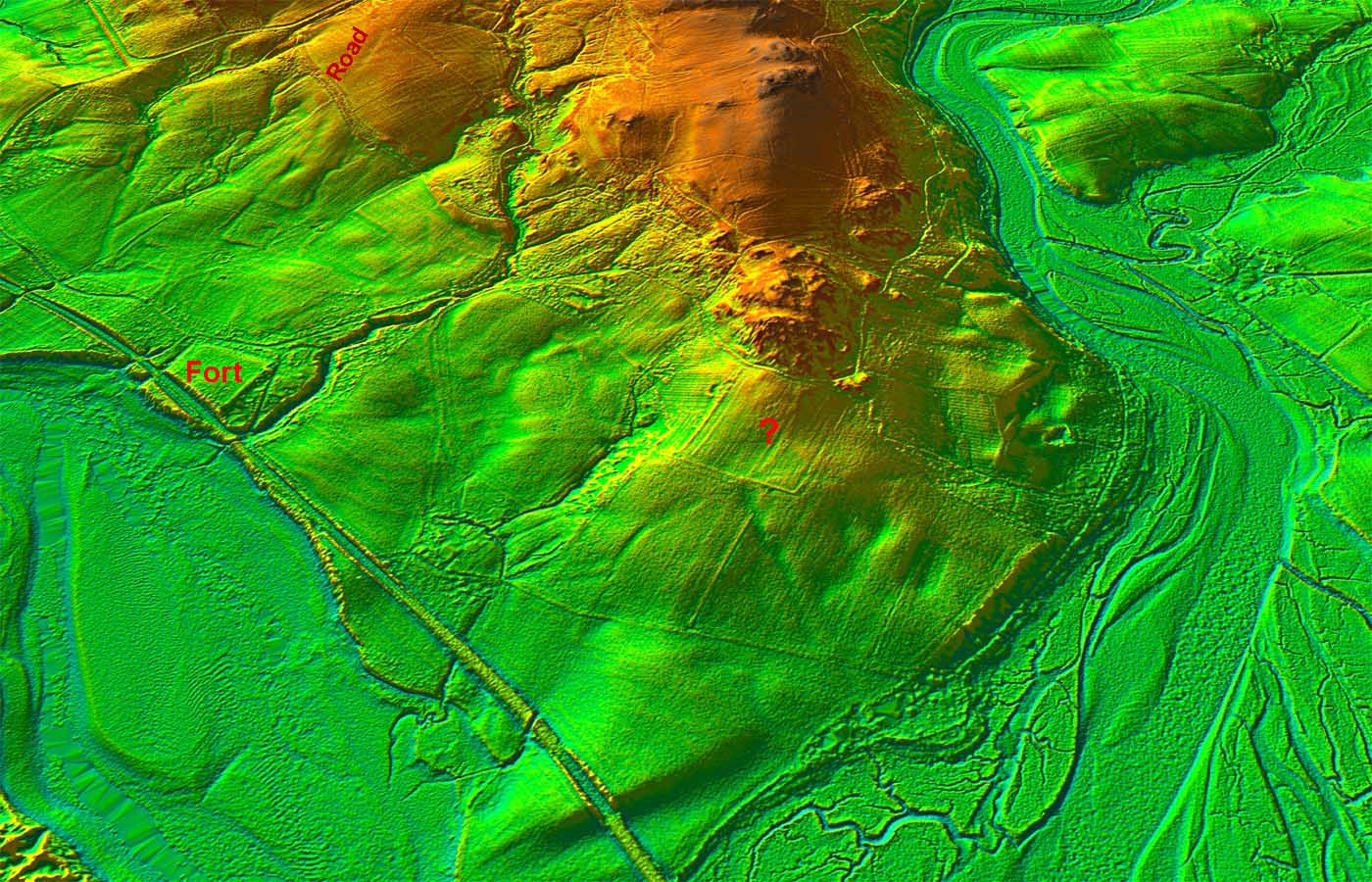 |
|
NEW - 3D Lidar video from Ravenglass Roman Fort following the Roman road up Eskdale |
|
|
|
|
|
Return to Cumbria Roman Roads homepage Last update: December 2023 |
© David Ratledge |

